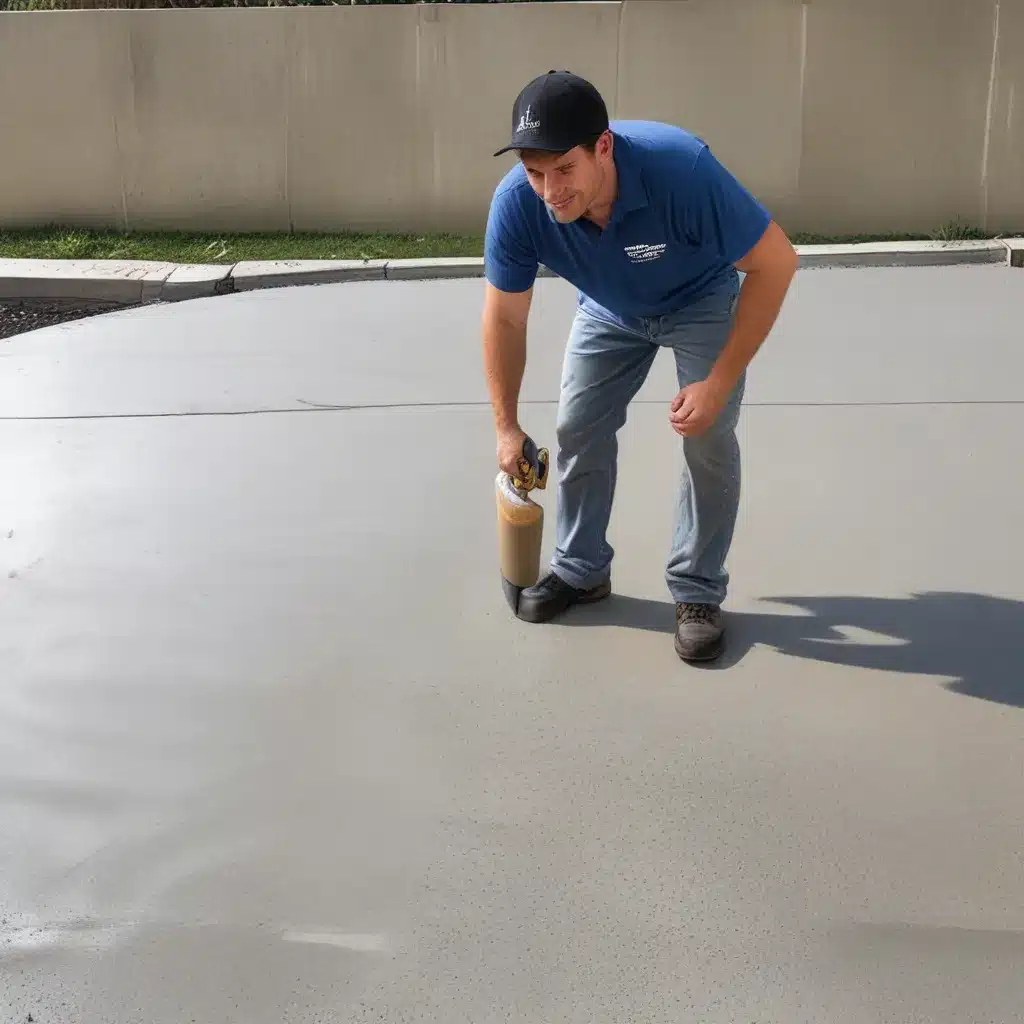
Concrete on a Shoestring? Yes, It’s Possible!
Ah, the woes of a concrete budget. As a professional concreter, I’ve seen it all – from homeowners with grand visions for their outdoor spaces, to businesses dreaming of that perfect showroom floor. But let me tell you, when the dollar signs start adding up, things can get really…well, sticky.
But fear not, my friends! I’m here to share my top tips and tricks for stretching that concrete budget of yours, without compromising on quality or curb appeal. After all, I’ve been in this game for over 20 years, and I’ve picked up a thing or two along the way.
Understanding the Concrete Cost Breakdown
Before we dive in, it’s important to understand the key factors that influence the cost of concrete. Ready-mix concrete is typically priced per cubic yard, with the base cost covering the materials (cement, aggregates, water) and delivery. But that’s just the tip of the iceberg.
Additional factors like labor, equipment rentals, and site prep can quickly add up. And let’s not forget about those pesky unexpected expenses – you know, the ones that pop up when you least expect them. Trust me, I’ve been there more times than I care to admit.
Maximizing Your Concrete Footprint
Now, let’s talk about getting the most bang for your buck. One of the easiest ways to stretch your concrete budget is to maximize your footprint. This means carefully planning the layout and dimensions of your project to minimize waste and optimize material usage.
For example, let’s say you’re looking to pour a new patio. Instead of going for a sprawling design that requires more concrete, why not consider a more compact, efficient layout? You’d be surprised how much you can save by shaving off just a few square feet here and there.
And when it comes topouring techniques, the pros have a few tricks up their sleeve. Did you know that using a resin-bonded surface can actually reduce the amount of concrete you need? It’s true! By creating a more stable, compacted base, you can get away with a thinner concrete slab. Just be sure to do your research and work with a reputable contractor who has experience with this method.
Embrace the Power of Recycled Materials
Another way to stretch your concrete budget is to embrace the power of recycled materials. Now, I know what you’re thinking – “Recycled concrete? Isn’t that just a bunch of broken-up chunks and debris?” Well, my friend, you’d be surprised.
These days, there’s a thriving market for high-quality recycled concrete aggregates (RCA). These materials are carefully processed and sorted to meet strict standards, making them a viable and cost-effective alternative to virgin aggregates.
Timing is Everything
When it comes to concrete, timing is everything. The best way to save money is to plan your project during the off-season, when demand is lower and contractors are more willing to offer discounts. In many regions, the spring and summer months are the busiest, so consider scheduling your work for the fall or winter if possible.
Another timing tip? Be flexible with your schedule. If you can be a little more accommodating, you might be able to score a better deal. For example, some concrete suppliers offer discounts for mid-week deliveries or for projects that can be squeezed in between larger jobs.
DIY, But with Caution
I know, I know – the idea of tackling a concrete project yourself might sound daunting. But hear me out. Carefully planned DIY work can be a great way to save money, especially when it comes to smaller projects like sidewalks, pathways, or even a modest patio.
Now, I’m not saying you should go out and try to pour a commercial-grade warehouse floor all by yourself. That’s a job best left to the professionals. But for simpler, residential-scale projects, a little elbow grease and some careful planning can go a long way.
Just be sure to do your research, follow best practices, and don’t be afraid to ask for help from experienced friends or even your local concrete contractor. Safety should always be your top priority.
Embrace the Power of Hybrid Solutions
Sometimes, the key to stretching your concrete budget is to get a little creative with your material choices. And that’s where hybrid solutions come in.
For example, you could consider using a combination of concrete and pavers for your patio or driveway. The pavers can provide a cost-effective way to cover larger areas, while the concrete can be used for more intricate designs or high-traffic zones.
Another hybrid option is to mix in recycled materials like crushed glass or even resin-bonded surfaces. These can not only save you money, but they can also add a unique, eye-catching aesthetic to your project.
The Power of Patience and Persistence
Last but not least, let’s talk about the power of patience and persistence. When it comes to concrete projects, it’s easy to get swept up in the excitement and want to dive in headfirst. But trust me, slow and steady wins the race.
Take the time to research your options, compare quotes, and negotiate with contractors. Don’t be afraid to ask for discounts or look for special promotions. And remember, sometimes the best deals come to those who are willing to wait.
Conclusion: Concrete Doesn’t Have to Break the Bank
There you have it, folks – my top tips for stretching your concrete budget without sacrificing quality or style. From maximizing your footprint to embracing recycled materials, there are so many ways to get the most bang for your buck.
And remember, no matter the size or scope of your project, the key is to approach it with a little creativity, a lot of planning, and a healthy dose of patience. Because at the end of the day, concrete doesn’t have to break the bank. With the right strategy, you can create the outdoor oasis of your dreams, all while staying firmly within your budget.
Happy concreting, my friends!

